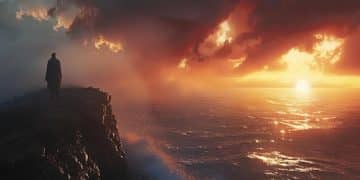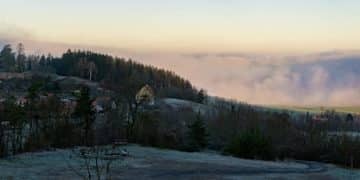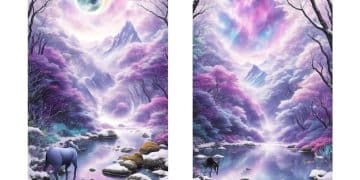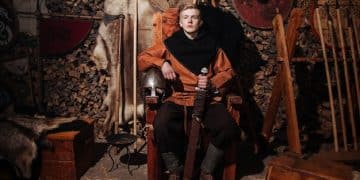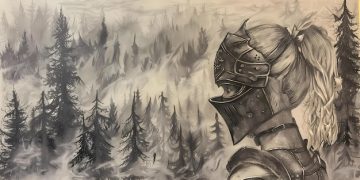Explore The Witcher’s Stunning Filming Locations on Netflix
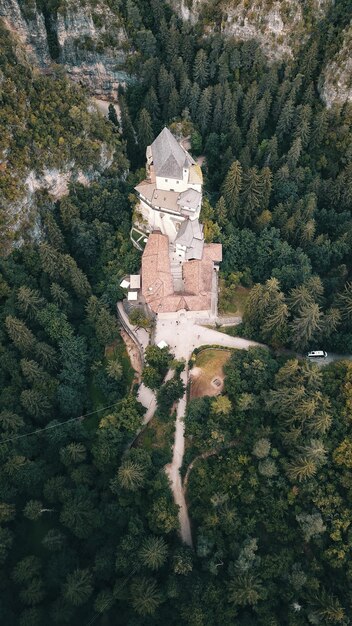
Netflix’s ‘The Witcher’ captivated audiences with its intricate plot and stunning visuals. A significant contributor to the show’s immersive atmosphere is its exceptional filming locations and meticulous production design, which includes castles, landscapes, and medieval-inspired sets.
Dive into the enchanting world of Netflix’s ‘The Witcher’: A Look at the Show’s Filming Locations and Production Design, where mythical landscapes come to life. The series’ success hinges not only on its compelling narratives but also on the breathtaking backdrops and intricately designed sets that transport viewers to the heart of the Continent. Let’s explore the real-world locations that brought Andrzej Sapkowski’s fantasy world to the screen.
Discover the Real-World Locations of The Witcher
The Witcher, a fantasy drama on Netflix, has garnered attention due to its gripping storylines and detailed world-building. The show’s locations play a crucial role in transporting viewers to the Continent. From ancient castles to picturesque landscapes, the filming locations provide an authentic backdrop that enhances the storytelling.
Ogrodzieniec Castle, Poland
Ogrodzieniec Castle in Poland served as the setting for the Battle of Sodden Hill. This medieval castle, with its weathered stone walls and towering ruins, added a layer of historical depth to the scenes. The castle’s imposing presence helped to capture the intense atmosphere of the battle.
Canary Islands, Spain
The Canary Islands, specifically locations in Gran Canaria, La Gomera, and La Palma, provided a diverse range of landscapes. The unique volcanic terrain, lush forests, and coastal vistas were utilized to create different regions within the Continent. These locations offered the production team a variety of natural backdrops.
- Gran Canaria offered desert and volcanic landscapes.
- La Gomera featured ancient laurel forests.
- La Palma provided lush, green environments.
The selection of these locations was pivotal in crafting the visual appeal of The Witcher. These real-world settings contributed significantly to the immersive experience for viewers.
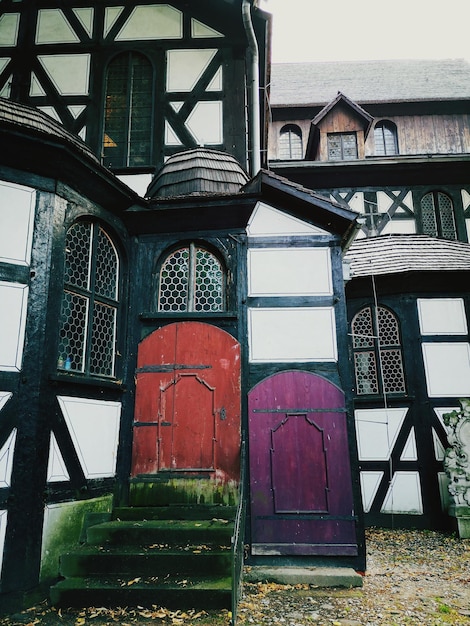
The Significance of Production Design in The Witcher
Production design is a critical element in bringing the world of The Witcher to life. The attention to detail in set construction, costume design, and overall visual aesthetic greatly contributes to the show’s believability. This detailed design helps immerse viewers in the fantasy world.
Barrandov Studios, Prague
Barrandov Studios in Prague acted as a primary hub for constructing elaborate sets. Highly skilled artisans and craftsmen meticulously created medieval towns, castle interiors, and other environments that were central to the storyline. The studio’s resources allowed for intricate designs and large-scale builds.
Costume Design
The costume design of The Witcher reflects the diverse cultures and social strata within the Continent. Intricate armor, period-appropriate clothing, and unique textiles enhance the character depth and storytelling. Each costume is carefully designed to reflect the character’s personality and background, adding authenticity to the show. The attention to historical accuracy in costume choices further immerses the viewer in the world.
The meticulous production design plays a pivotal role in crafting the distinct look and feel of The Witcher. From massive studio sets to finely crafted costumes, every detail is deliberately chosen to enhance the authenticity of the show.
Exploring Diverse Landscapes: From Hungary to Italy
The Witcher’s filming locations extend beyond Poland and the Canary Islands, incorporating landscapes from Hungary to Italy. Each provides unique characteristics that enrich the visual tapestry of the series. These varied environments enhance the sense of geographical diversity within the fictional world.
Hungary’s Kiscelli Museum
The Kiscelli Museum in Budapest, Hungary, provided the setting for certain castle scenes. Its baroque architecture and historic ambiance were perfect for capturing the grandeur of royal settings. The museum’s unique historical context contributed to the ambiance of the scenes.
Italy’s Lago di Fusine
Lago di Fusine in Italy offered stunning alpine scenery. The crystal-clear lake and surrounding mountains added picturesque value to the show’s landscapes, contributing to the visual depth and appeal. The location’s natural beauty provided a contrast to the darker, more rugged environments featured elsewhere in the series. This contrast enhances the show’s overall aesthetic.
- Italy added alpine beauty to the landscapes.
- Hungary provided historical settings.
These diverse European locations contributed to the sense of expansiveness and variety within The Witcher’s world, offering viewers a rich and visually stimulating environment.
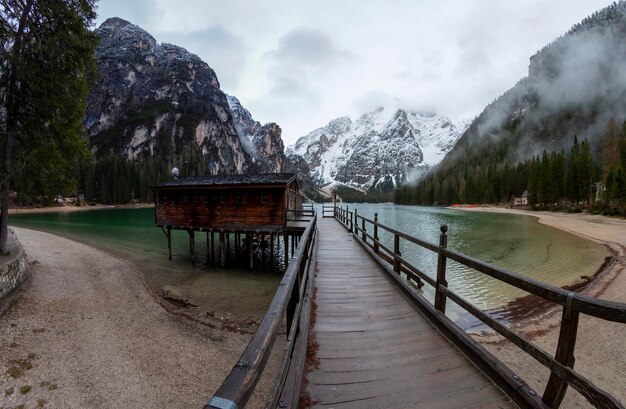
Challenges and Innovations in Location Scouting
Location scouting for The Witcher presented numerous challenges, which required creative innovations. Achieving the right balance of authenticity, accessibility, and visual appeal demanded meticulous planning and adaptability. The production team had to overcome several logistical and creative hurdles.
Balancing Authenticity and Practicality
Scouting authentic locations often meant navigating remote or difficult-to-access areas. The production team had to ensure that these locations were logistically feasible for filming while preserving the desired atmosphere. Practicality had to be balanced with visual accuracy.
Weather and Seasonal Variations
The unpredictable nature of weather and seasonal variations posed additional challenges. Ensuring consistent visual quality across different filming periods necessitated careful planning and adaptation. Weather contingencies were always part of the location scouting process.
Innovation played a key role in overcoming these location scouting challenges. Drone technology was often used to survey and capture panoramic shots, providing new perspectives on potential filming locations. Creative problem-solving was essential in making the most of each location while adhering to the show’s visual aesthetic. By using drone technology, scouting teams gained new perspectives, ensuring an optimal choice of location that fulfilled production needs.
The Witcher’s Visual Effects and Set Extensions
While practical locations provided a foundation for The Witcher’s visual appeal, visual effects (VFX) and set extensions played an equally significant role. These digital enhancements created larger-than-life landscapes and fantastical elements that would have been impossible to achieve otherwise. VFX and set extensions worked together to expand the show’s visual scope.
Creating Mythical Creatures
Many of The Witcher’s creatures, such as dragons and monsters, were brought to life through advanced VFX techniques. Digital artists meticulously crafted these beings, integrating them seamlessly into the real-world environments. State-of-the-art VFX ensured these creatures appeared realistic and immersive.
Expanding the Horizon with Set Extensions
Set extensions were used to expand the scope of practical locations, adding layers of grandeur to castles or exaggerating the scale of landscapes. These digital enhancements created a sense of vastness and depth. By combining practical sets with digital extensions, the production team enhanced the visual impact of the series.
- VFX was instrumental in creating magical elements.
- Set extensions added digital layers to practical locations.
The combination of VFX and set extensions elevated the visual storytelling capabilities within The Witcher. These digital tools helped blur the boundaries between reality and fantasy, creating a captivating viewing experience.
Impact of Filming Locations on Local Economies
The decision to film The Witcher in various locations has had a notable economic impact on the local communities. The influx of production crews, actors, and support staff generated revenue and created employment opportunities. These economic benefits extend beyond the immediate filming period.
Tourism and Visibility
The Witcher’s popularity has boosted tourism in several of its filming locations. Fans flock to see the real-world settings that inspired the series, contributing to local economies. Increased tourism creates new business opportunities and supports local service industries.
Employment Opportunities
Local residents were often hired to work as extras, crew members, and support staff, providing valuable employment opportunities. These jobs not only generate income but also provide training and experience in the film industry. The increased employment contributes to the financial stability of local communities.
The filming of The Witcher has delivered tangible economic benefits to many of the regions where it was shot. These benefits include increased tourism, job creation, and enhanced visibility, leaving a lasting positive impact on local economies. The series’ success has brought both economic and cultural benefits to these areas.
| Key Point | Brief Description |
|---|---|
| 📍 Filming Locations | Series filmed in Poland, Canary Islands, Hungary, and Italy. |
| 🎬 Production Design | Detailed sets at Barrandov Studios, Prague, and authentic costume design. |
| ✨ VFX & Set Extensions | Visual effects and set extensions create mythical creatures and expand landscapes. |
| 💰 Economic Impact | Increased tourism, job creation, and visibility for local economies. |
Costume Design?
▼
What locations were used for filming The Witcher?
▼
The Witcher utilized several locations, including Ogrodzieniec Castle in Poland, the Canary Islands in Spain, Kiscelli Museum in Hungary, and Lago di Fusine in Italy.
▼
Barrandov Studios in Prague acted as a primary hub for constructing elaborate sets like medieval towns and castle interiors, which were crucial to the storyline.
▼
Costume design enhanced the series by reflecting diverse cultures and social strata. Intricate armors, period clothing, and unique textiles added depth to characters.
▼
Visual effects were instrumental in creating magical elements, like mythical creatures and expansive landscapes, enhancing the series’ overall visual appeal and storytelling.
▼
The filming boosted tourism, created job opportunities, and enhanced the visibility of the local economies, leaving a positive and lasting impact on the communities involved.
Conclusion
In conclusion, the success of Netflix’s ‘The Witcher’ is deeply rooted in its stunning filming locations and meticulous production design. From the historic castles of Poland to the alpine lakes of Italy, and coupled with the expert use of VFX, these elements combine to create a truly immersive and visually captivating world that enhances the overall storytelling experience.
